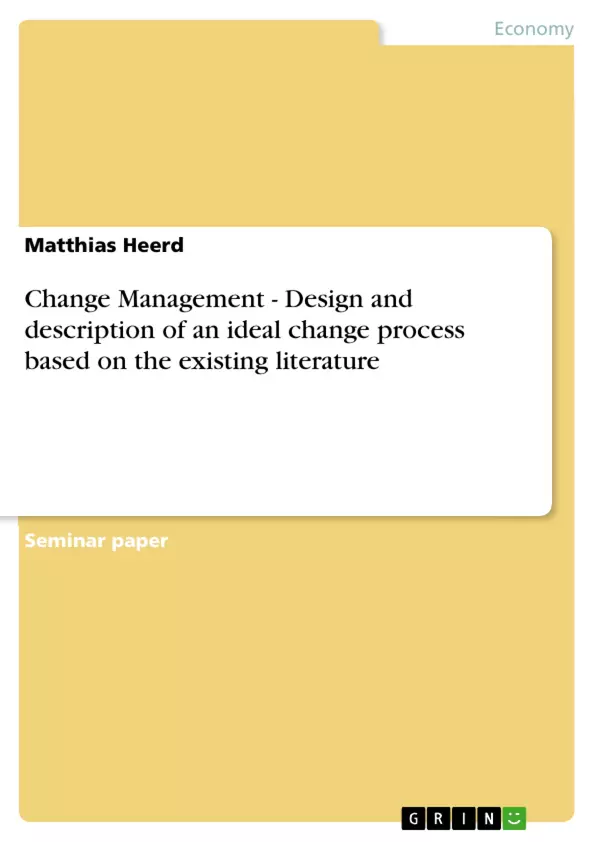This work deals exclusively with describing a generic ideal change process from the perspective of an organization based on the existing literature.
After quickly elaborating on the relativity of the term “ideal” change process and the determination of a clear definition within the context of the paper, the author will introduce the reader to four basic mindsets and assumptions about organizational change. Background knowledge about that is to be used as input for the design of the ideal change process. Once this is done, the ideal change process is to be defined on a generic level with all of its components. The paper closes with a summary and a conclusion.
Inhaltsverzeichnis (Table of Contents)
- Introduction
- Problem definition and relevance of the topic
- Scope of work and methodology
- An ideal change process – fiction or reality?
- Understanding organizational change – four basic metaphors
- Frame construction of an ideal change process
- Define need for action and develop a plan
- Get the commitment of powerful people and form a strong team
- Create a sense of urgency and clearly communicate the need for change
- Help to overcome resistance to change
- Making the affected to participants
- Reducing fear by advanced learning
- Creating trust
- Leading the change
- Tying rewards to successful implementation
- Celebrate successes
- Review and learning phase
- Summary and conclusion
Zielsetzung und Themenschwerpunkte (Objectives and Key Themes)
This paper aims to design and describe an ideal change process based on existing literature, examining the advantages and disadvantages of implementing such a process. It seeks to provide a comprehensive framework for managing organizational change effectively.
- The role of resistance to change in organizational contexts
- The importance of effective communication and stakeholder engagement
- The development and implementation of a structured change management framework
- Overcoming resistance to change and fostering acceptance
- The impact of change management on organizational performance and success
Zusammenfassung der Kapitel (Chapter Summaries)
- Introduction: This chapter establishes the importance of change management, highlighting the historical context and the growing need for effective change strategies in today's dynamic business environment. It introduces the concept of resistance to change and its significance in hindering organizational progress.
- An ideal change process – fiction or reality?: This chapter delves into the theoretical frameworks and models associated with change management, exploring the feasibility of implementing an ideal change process in real-world settings.
- Understanding organizational change – four basic metaphors: This chapter examines different approaches to understanding change within organizations, highlighting their strengths and limitations. It offers a comparative analysis of these approaches, providing valuable insights for practitioners.
- Frame construction of an ideal change process: This chapter outlines the key components of an ideal change process, addressing crucial aspects such as defining the need for change, securing commitment from key stakeholders, communicating the change effectively, and overcoming resistance. It provides practical strategies for addressing each stage of the process.
Schlüsselwörter (Keywords)
This paper explores the concepts of change management, resistance to change, organizational change, stakeholder engagement, communication strategies, change frameworks, and the implementation of successful change initiatives.
- Citation du texte
- Diplom-Betriebswirt (FH) Matthias Heerd (Auteur), 2012, Change Management - Design and description of an ideal change process based on the existing literature, Munich, GRIN Verlag, https://www.grin.com/document/212415



